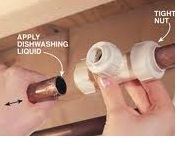- Location
- New Jersey
- Occupation
- Journeyman Electrician (retired)
As an inspector should I see a jumper across a water heater I would write it up as a violation of the above mentioned code section.
If the hot and cold piping were connected together via a metal mixing valve then would anything further be required? And if they were connected that way then the bonding jumper at the HWH would simply be redundant. As far as I know redundancy is not prohibited so in order for it to be a violation, as you've stated, then one would first need to establish that there is no metallic connection between the hot and cold water piping.
So if I'm understanding, you're saying that two completely separate hot and cold metal piping systems can only be bonded using one of the 4 methods previously mentioned and that a bonding jumper at the HWH would not satisfy the NEC.


